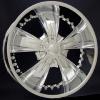HEre is the message: IRQL_NOT_LESS_OR_EQUAL
The funny thing about this is that the message contains no filenames whatsoever. It is 0x00000000a. I cannot remember the rest, but i will write it down next time.
I'm using XP Pro, with a 40g harddrive. 224mb Ram.
Thank you. Get back to me ASAP..

















 Sign In
Sign In Create Account
Create Account

